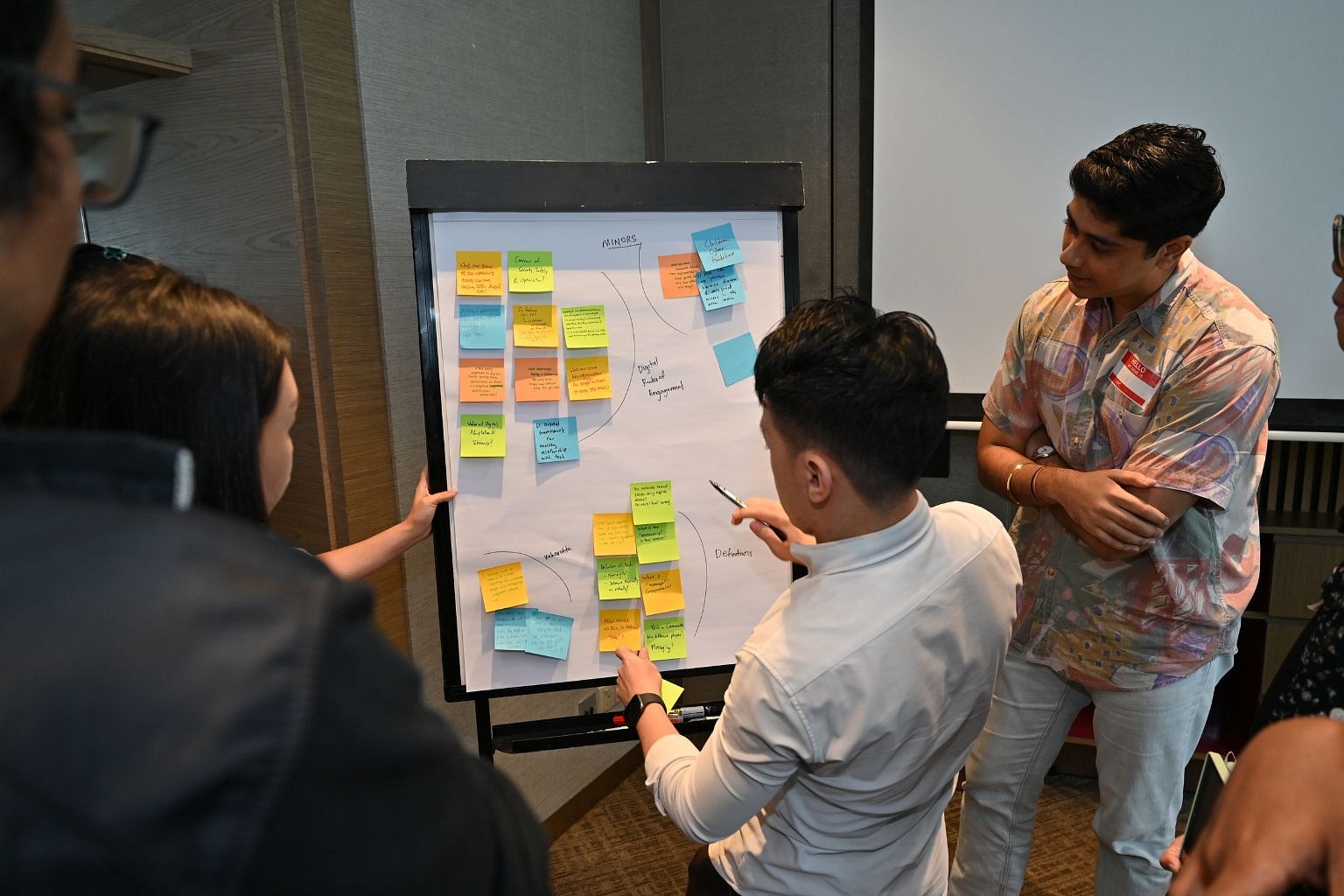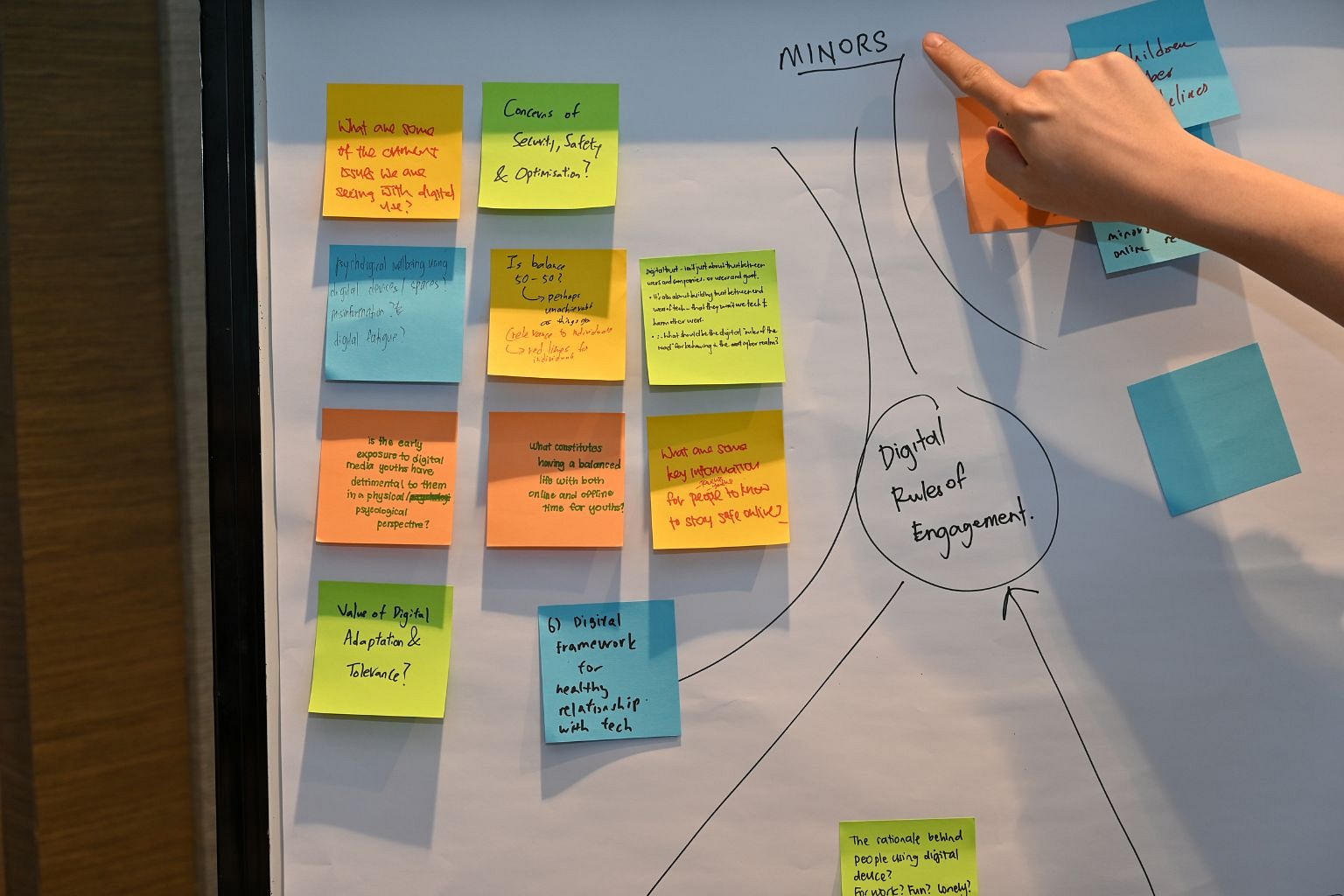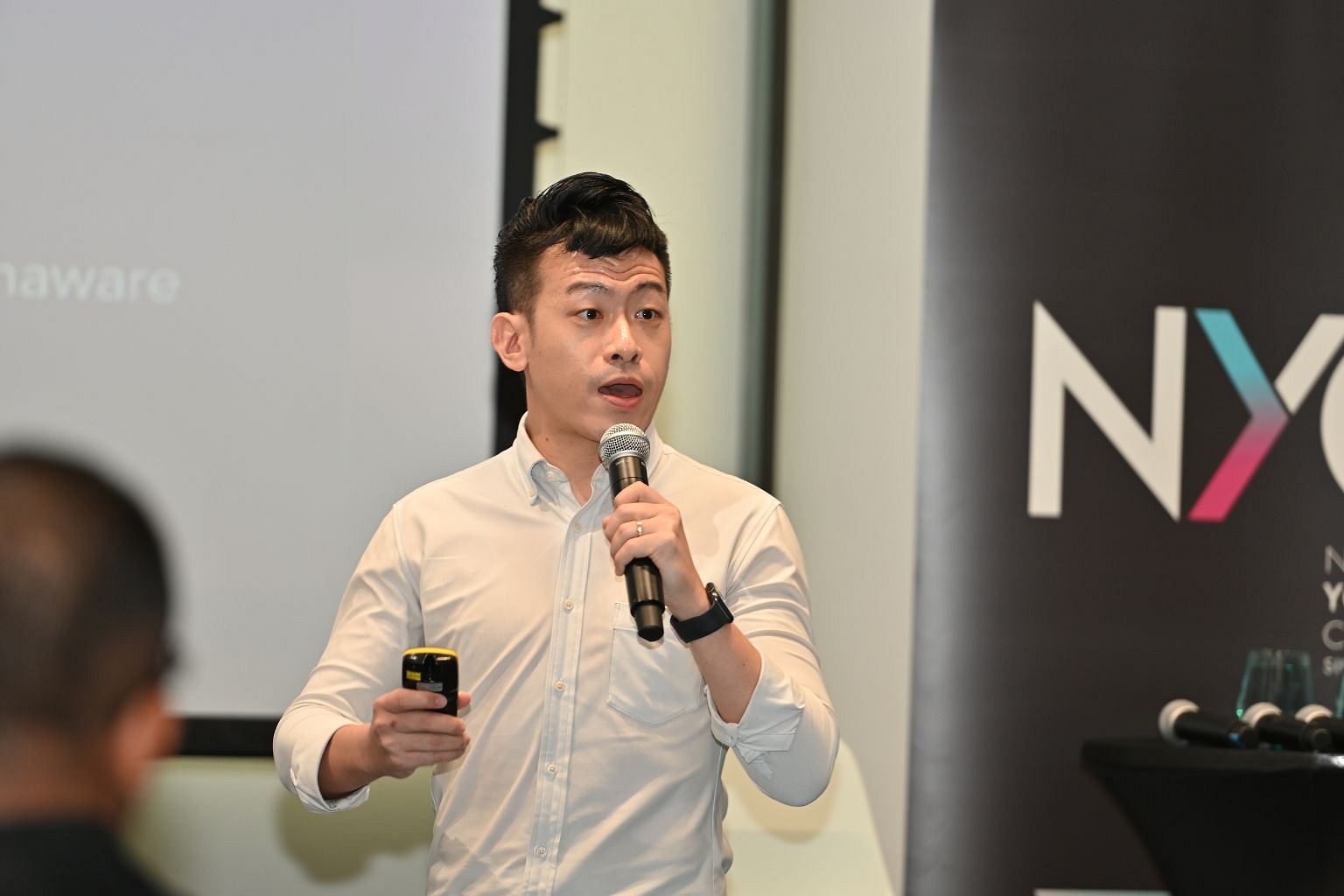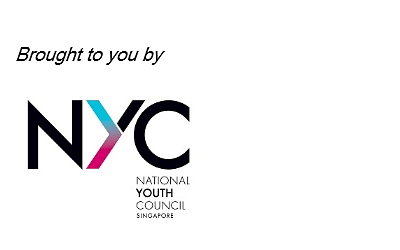By the time Ms Katherine Chang turned 19 this year, she had already witnessed the toll of cyberbullying and online harassment on her peers. Friends as young as 16 had grappled with anxiety, stress and insomnia due to personal attacks online. Some were so deeply affected that they abandoned certain social media platforms entirely.
Ms Chang drew from her own experiences and those of her peers to provide valuable insights to the #TechHacks Youth Panel. She is among 29 youths aged 15 to 35 who have been discussing potential solutions to counter online harms on social media faced by young Singaporeans since November last year.
The panel has been addressing key issues concerning digital well-being, such as balancing safe and effective tech use, regulatory measures for social media, and understanding the physical, mental and emotional impacts of excessive social media use.
For Ms Chang, who is taking a diploma in business management, participating in #TechHacks assures her that young people like her are heard by policymakers when it comes to issues close to their hearts.
“By being a part of this panel, we make sure that government policies are reflective of the actual needs and realities of young people,” she says.

Her fellow panellist, 30-year-old public servant Ms Nandhini Balakrishnan, agrees, stressing that it is important for young people to be included in policymaking on issues that are relevant to them.
“A lot of times, we are unable to go beyond just talking about issues on social media and we don't have the resources to prototype our ideas or turn to an agency to guide us to take the solution further,” says Ms Nandhini, who is empowered by the opportunity to directly influence policymaking through the Youth Panels.
As young people are frequent users of technology and social media in Singapore, the #TechHacks youth panel has been discussing at length and depth the key issues surrounding digital well-being, digital safety, and digital inclusion and literacy. This includes how to enhance the way social media companies respond to user reporting and the limitations of human reviewers to monitor social media platforms.
Beyond just sharing their insights, the panel has been tasked to design and develop proposals that they will present at the Youth Policy Forum in August, with the ultimate goal of having the government adopt and implement these ideas.
Growing scourge of internet harm
Online harm is a growing problem in Singapore. A survey in April by the Ministry of Digital Development and Information revealed that 66 per cent of the more than 2,000 respondents aged 15 and over encountered harmful online content on social media services designated by the Infocomm Media Development Authority (IMDA) under the Code of Practice for Online Safety1, up from 57 per cent in 2023. 45 per cent of that group identified cyberbullying as the most common type of harmful online content on designated social media services.
For young people born in the digital age, their offline and online worlds have become intertwined, making it difficult to distinguish between virtual and real-life harms or escape their far-reaching effects.
While Ms Chang, Ms Nandhini and their fellow #TechHacks panellists develop ways to build safer online experiences, 90 of their peers are taking on three other concerns – the #LifeHacks, #JobHacks and #GreenHacks panels are looking at financial literacy, employment opportunities and environmental sustainability, respectively.
The four groups engaged officials from the National Youth Council (NYC) and other agencies in their discussions, search for solutions and step-by-step navigation of policymaking.

For the #TechHacks panel, the process involved identifying key problems, researching the subject matter extensively, ideating solutions, conducting focus groups with student leaders from institutes of higher learning, engaging in a dialogue with Google's Trust and Safety team to hear about their efforts in maintaining online trust and safety, and polling the public to validate their problem statement.
Through the process, the #TechHacks panel identified a crucial need that they feel warrants greater attention from regulators, tech platforms, schools, the community and most importantly, youths themselves: Addressing the issue of mindfulness and awareness towards online harms on social media.
Mr Josh Lee Kok Thong, 34, explains that the panel honed in on these issues because it recognised the significant impact online harms can have on youth during their formative years.
The panel’s discussions also recognised the broader societal impact of harmful online behaviours.
“Each online harm that's perpetrated on an individual doesn’t just end there – it creates a ripple effect that impacts other social relationships as well,” says Mr Lee.
Complexities of policymaking
Even though youth is defined as those aged between 15 to 35, this is not a homogenous group. For example, those born before 2000 would probably remember life before smartphones became popular.
Mr Lee describes the process of getting a diverse group to reach a consensus as “challenging”.
“Every meeting, some members will realise something they weren’t aware of before, for example, a data point or a perspective, and through the discussions, we see how different perspectives come together and appreciate that what we are seeing is actually part of a larger picture,” he says.

Ms Nandhini concurs: “My key takeaway is that while I’ve learned more about the policymaking process, I’ve also come to understand that it can be a bit messy and complicated at times.”
The panel is also acutely aware of how quickly technology evolves. “Mindfulness and awareness of online harms have to be constantly refreshed and upgraded, just like our digital systems and hardware,” says Ms Nandhini.
To this end, one of the panel’s recommendations will be to call for the government to strive to include youths as part of their digital policymaking journey.
With his legal training, a few years of policymaking in the civil service and his current position as regional managing director of global non-profit The Future of Privacy Forum, Mr Lee wants young people to be able to contribute to policymaking on a regular basis. Calling this part of the panel’s “aspirational statement”, he would like to see youths as a stakeholder in policymaking even after the year-long Youth Panel initiative wraps up when the groups submit their recommendations to government agencies in November.
“We're working towards building youth involvement into the very fabric of policymaking on digital issues. It's what we call ‘youth by design and by default’,” says Mr Lee. “This approach ensures that policies are not just for youth, but by youth.”
For Ms Chang, the idea that the recommendations she helped create could one day help other young people feel safer on social platforms is comforting.
“Being on the #TechHacks panel has shown me that my voice matters. Moving forward, I look forward to making sure all our ideas are implemented and that we'll see tangible improvements against online harms within our community,” she says.
Do you have recommendations for #TechHacks? Share them with the youth panellists at the Youth Policy Forum.
Footnote:
1Six social media services with significant reach or impact have been designated under the Code of Practice for Online Safety which came into effect on July 18, 2023. These platforms are Facebook, HardwareZone, Instagram, TikTok, X (formerly known as Twitter) and YouTube. More details can be found on IMDA’s website.


